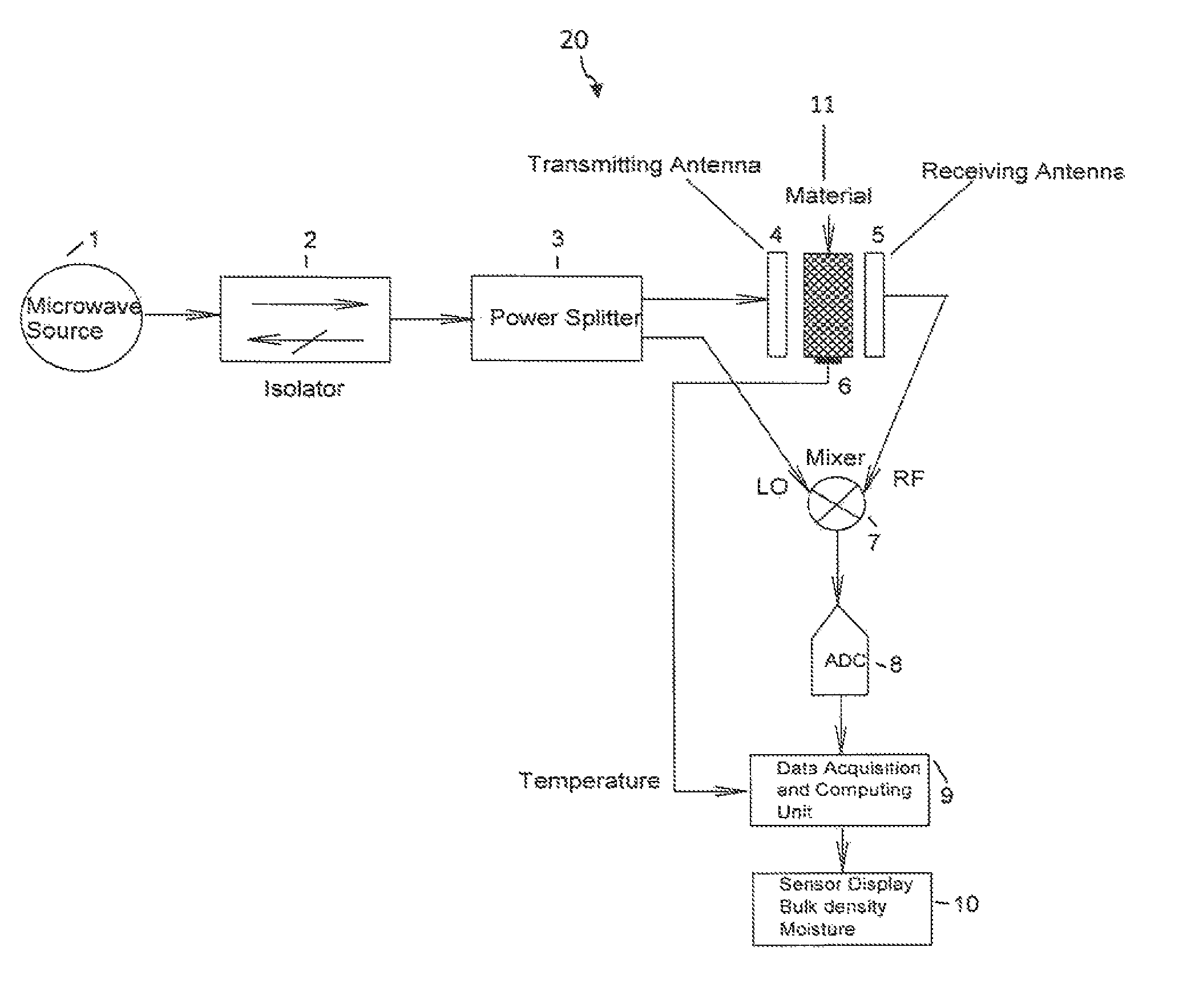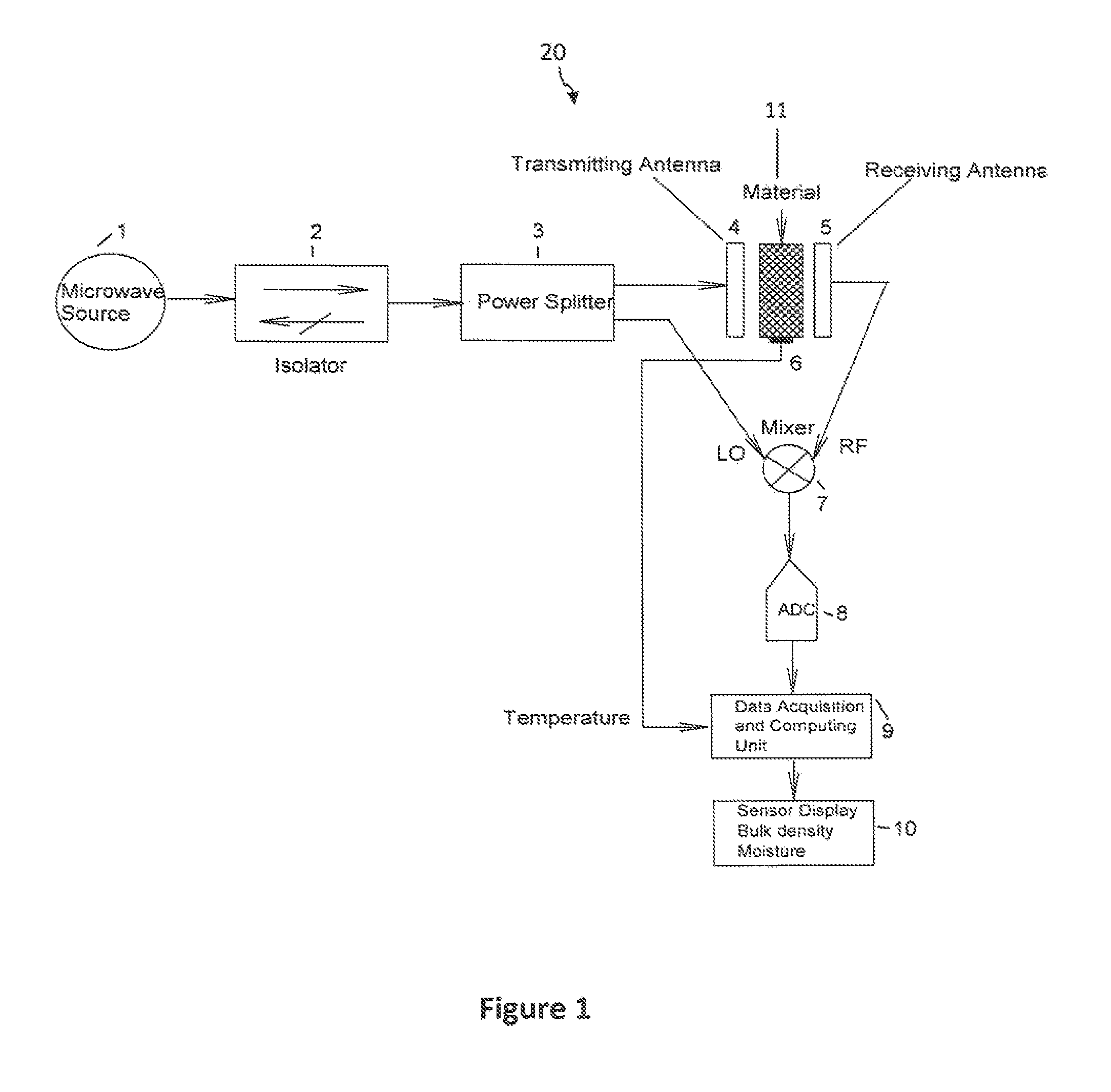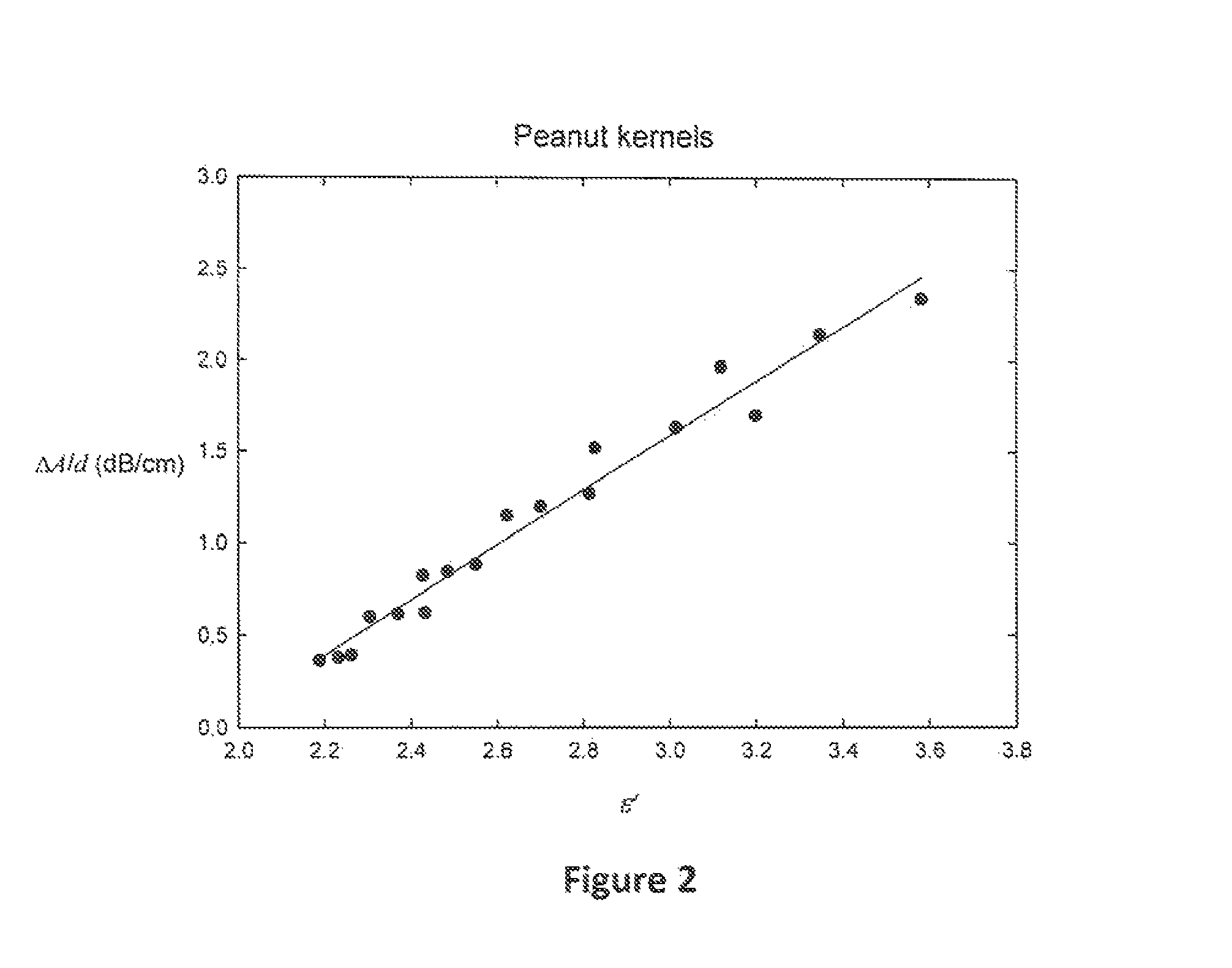Microwave sensor and algorithm for moisture and density determination
- Summary
- Abstract
- Description
- Claims
- Application Information
AI Technical Summary
Benefits of technology
Problems solved by technology
Method used
Image
Examples
example 1
[0065]During the grading process, peanut pod samples are shelled and cleaned to determine the moisture content in the peanut kernels. This is somewhat tedious and time consuming. A method is disclosed for determining moisture content in peanut kernels from measurement of the dielectric properties of samples of clean or unclean peanut pods without having to shell them. The method only requires the introduction of pod samples to the sensor for an instantaneous determination of moisture content. Calibration of the sensor prior to use consists of collecting dielectric properties data for the peanut kernel and peanut pod samples of different moisture contents, bulk densities, and temperatures at a single microwave frequency. Then, the value of the density-independent calibration function given in equation (18) is calculated for each sample following the steps mentioned above. FIGS. 5 and 6 show the variations of ψk, for the kernels, and ψp, for the unshelled pods, with moisture content a...
PUM
 Login to View More
Login to View More Abstract
Description
Claims
Application Information
 Login to View More
Login to View More - Generate Ideas
- Intellectual Property
- Life Sciences
- Materials
- Tech Scout
- Unparalleled Data Quality
- Higher Quality Content
- 60% Fewer Hallucinations
Browse by: Latest US Patents, China's latest patents, Technical Efficacy Thesaurus, Application Domain, Technology Topic, Popular Technical Reports.
© 2025 PatSnap. All rights reserved.Legal|Privacy policy|Modern Slavery Act Transparency Statement|Sitemap|About US| Contact US: help@patsnap.com



